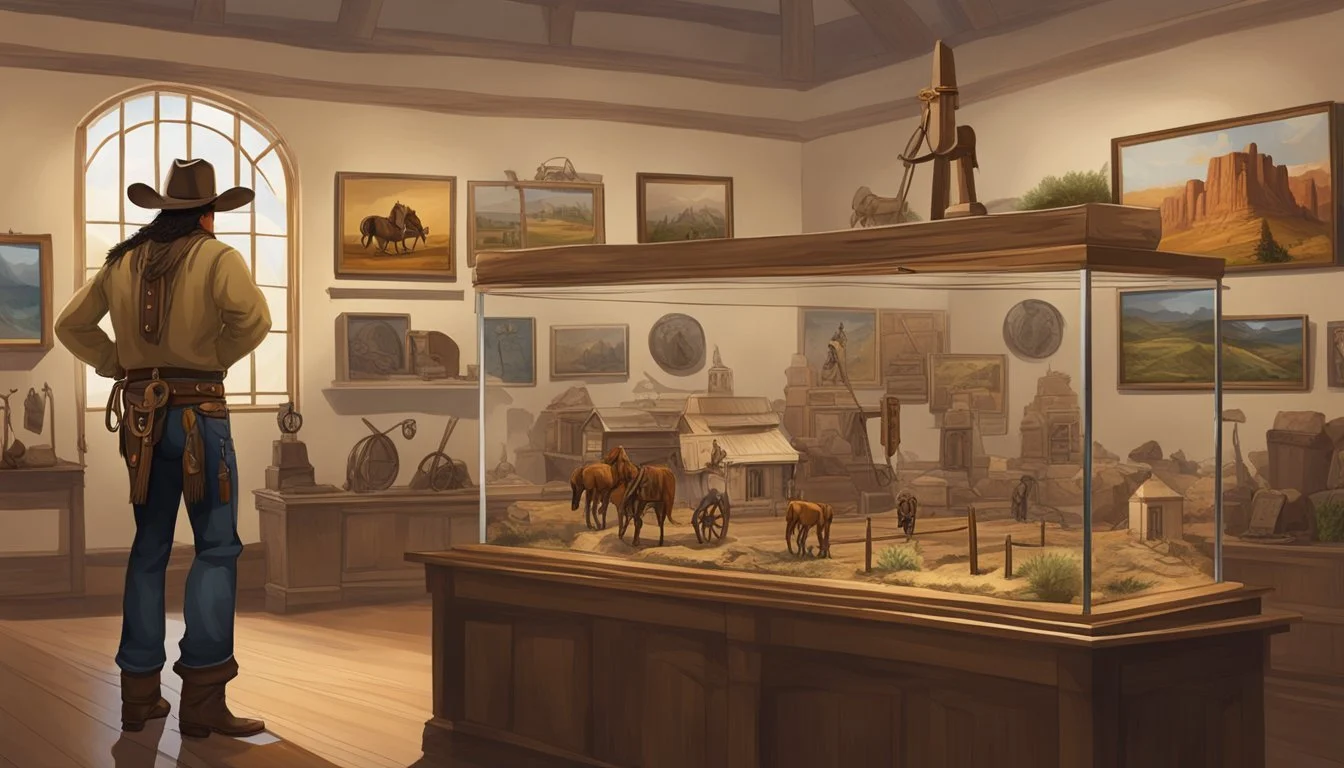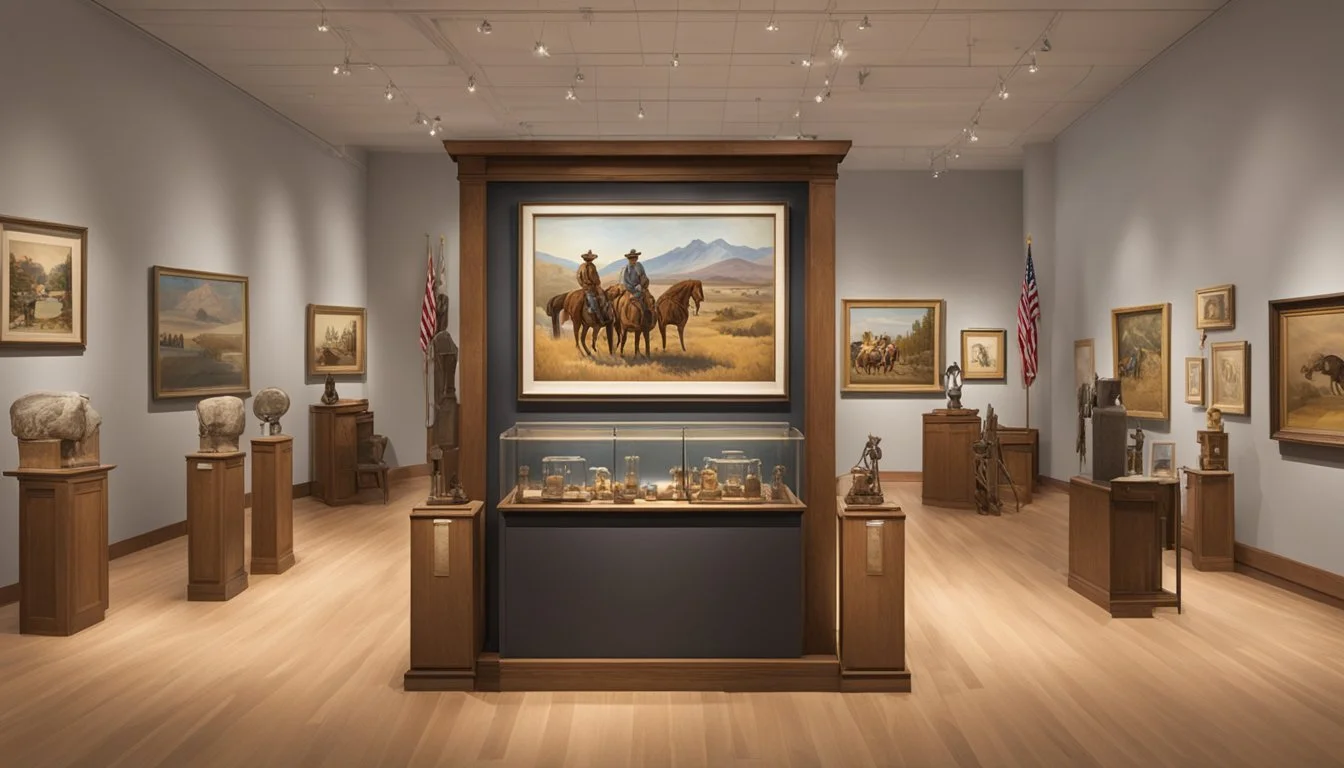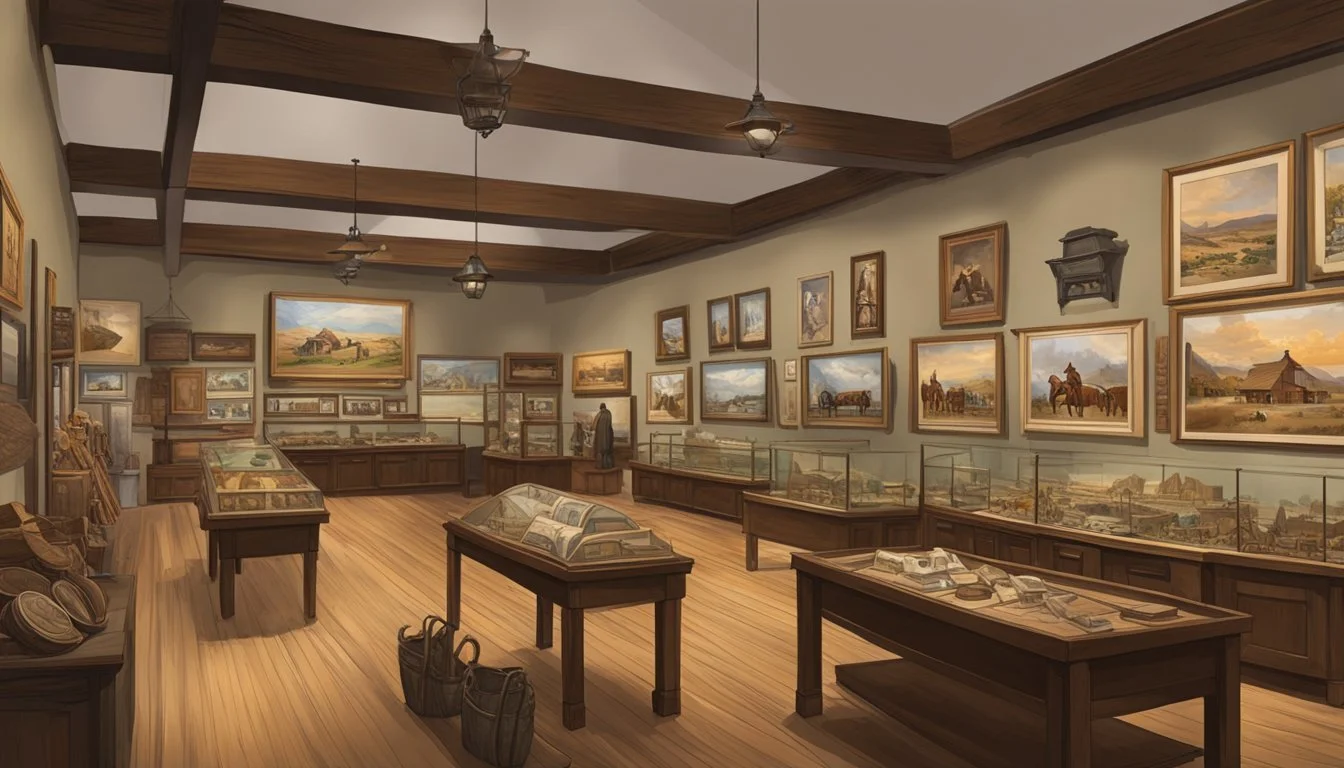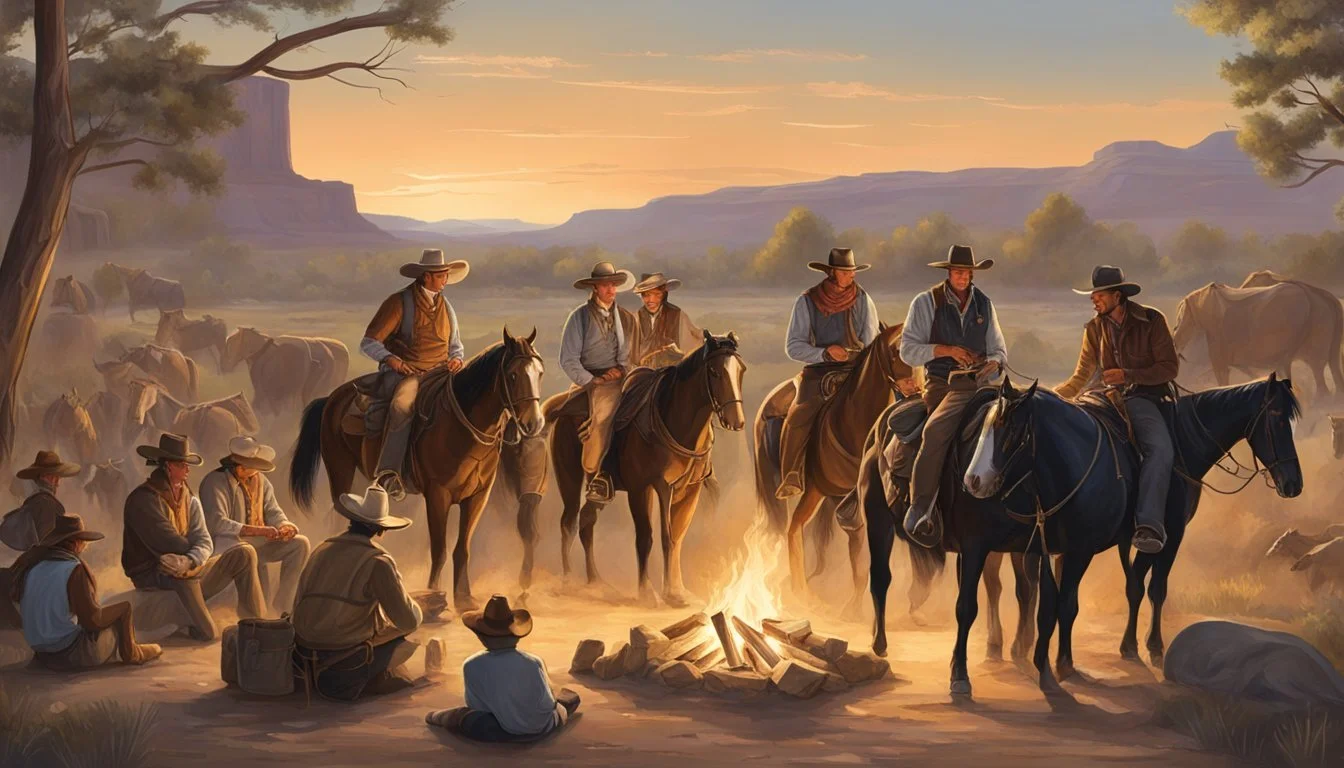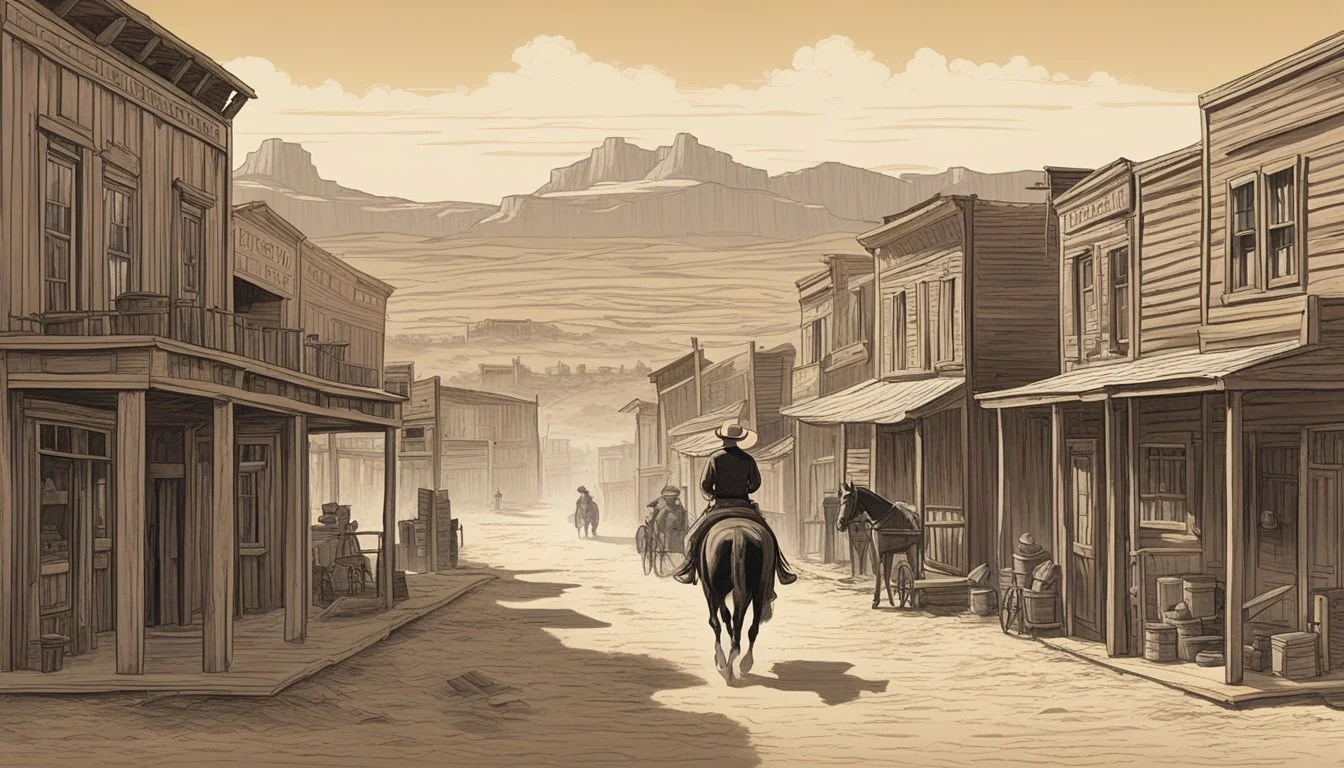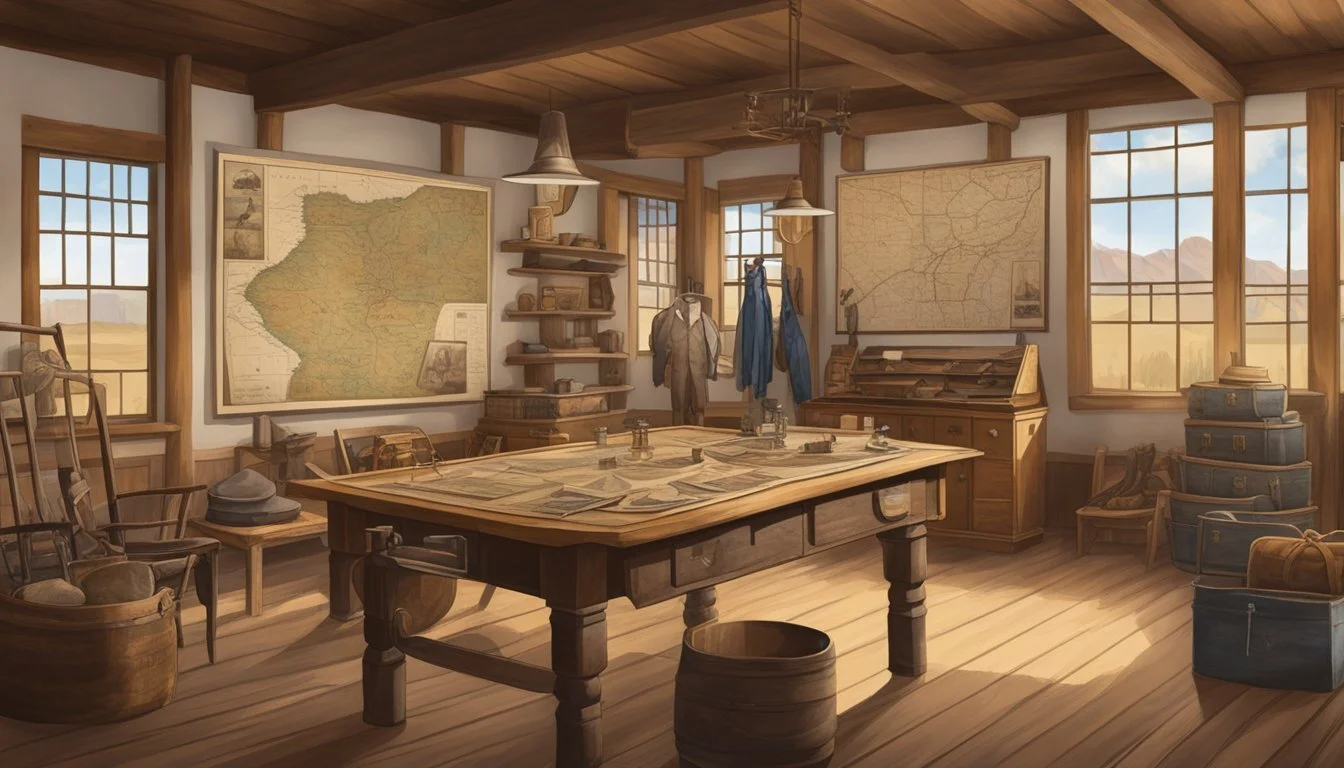Preserving Cowboy Culture
Highlighting Key Museums and Historical Landmarks
Preserving the legacy and traditions of cowboy culture is essential to understanding a pivotal chapter in American history. Museums and historical sites dedicated to the cowboy era play a crucial role in capturing the spirit of the American West, a period characterized by grit, determination, and a unique way of life. These institutions not only safeguard artifacts and stories but also provide an immersive educational experience, allowing visitors to step back in time and appreciate the contributions of cowboys to America's cultural tapestry.
The cowboy culture that emerged during the 19th century has left an indelible mark on the American identity, celebrated for its values of hard work and camaraderie. The National Cowboy & Western Heritage Museum, originally founded as the Cowboy Hall of Fame and Museum in 1955, is a prime example of such preservation efforts. Located in Oklahoma City, it stands as a testament to the cowboy's enduring influence, offering an array of exhibits that detail the life of trailblazers and the evolution of the West.
With each historical artifact and exhibit, these museums contribute to the conservation of western heritage, ensuring that the essence of the cowboy is not lost to time. Across different states, from North Dakota to Oklahoma, these institutions also underline the significance of the horse and the cowboy's role in shaping the agricultural and social landscapes. By upholding these narratives, the museums enshrine the pioneering spirit that once ruled the frontier lands and inspired countless stories, films, and folklore, anchoring the cowboy as an iconic figure in American heritage.
The Evolution of Cowboy Culture
The concept of cowboy culture is often romanticized, yet it has undergone a marked transformation from its historical roots to contemporary representation. This evolution reflects changes in societal values, as well as technological and cultural shifts.
Historical Significance of Cowboys
Cowboys emerged as pivotal figures in the settling of the American West, epitomizing a lifestyle that was integral to the cattle herding and ranching history of the United States. Their expertise on horseback and skills in managing livestock became the backbone of the cowboy heritage that is celebrated in various historical sites and museums.
Key Aspects: Cowboys' expertise, cattle-ranching, horseback riding
Local Influence: Involvement of cowboys in community development
Rodeos and Cultural Celebrations
Rodeos have historically served as grand stages where cowboy skills are showcased and celebrated. These events grew from informal competitions to organized festivals that highlight the historic competencies of Western performers.
Rodeo Origins: Competitive, skill-based events among ranch hands
Contemporary Events: Blend of historic traditions with modern entertainment
Impact on Modern Societies
The ethos of the cowboy lifestyle continues to resonate with modern societies, retaining its relevance through adaptation to contemporary ranching measures and caring for community heritage.
Current Cowboy Role: Maintainer of traditions, modern ranching participant
Cultural Legacy: Inherited values, symbols of American individualism
The legacy of cowboys informs both the history and the ongoing narrative of Western heritage, ensuring that this iconic element of American identity is preserved and understood within its proper context.
Museum and Historical Site Overviews
Discovering the rich heritage of the Old West, visitors can experience an intricate tapestry of history through various museums and historical sites in Oklahoma. These institutions preserve a range of narratives from the lives of American cowboys to the culture of Native American societies.
National Cowboy & Western Heritage Museum
The National Cowboy & Western Heritage Museum, established in 1955 and located in Oklahoma City, stands as a centerpiece for cowboy culture and heritage. Formally known as the Cowboy Hall of Fame, its mission, under the guidance of a dedicated board of directors, is to preserve and interpret the evolving history and cultures of the West for the education and enrichment of its diverse audiences. With an expansive collection of Western art and artifacts, the museum offers in-depth exhibitions that bring the American cowboy legacy to life.
American Cowboy Exhibitions
Among the features inside the museum, American Cowboy Exhibitions play a pivotal role. Visitors encounter a wide range of cowboy-related artifacts, including saddles, chaps, and spurs, each with their unique story. The exhibitions are designed to communicate the practicalities and aesthetics of the cowboy lifestyle, contributing to a better understanding of this iconic American figure.
Preservation of Native American Culture
Recognition of Native American influence is integral to the narrative of the West. The museum includes Native American galleries dedicated to showcasing the art and cultural artifacts of Native peoples. These spaces honor the indigenous heritage, featuring collections that range from traditional attire to sacred objects, thereby immortalizing the vibrant cultural imprint of Native Americans on the Western frontier.
Artifacts and Collections
Preserving history through artifacts and collections is key to the museum's mission. On display are numerous historical items, such as Victorian firearms that exemplify the era's technology and craftsmanship. Fine art collections highlight the transcendent beauty of the West and its peoples. Each piece, whether it is a work of art or an everyday object, serves as a window into the past, offering visitors tangible connections to the unfolding story of the American West.
Significant Artists and Works
This section explores the pioneering efforts of Frederic Remington and Charles M. Russell in preserving western history through their art. Their works, prominently displayed in museums, capture the essence of the American West and continue to influence contemporary western art.
Frederic Remington and His Legacy
Frederic Remington is a celebrated figure in the annals of American art for his depictions of the Old West. His sculptures and paintings offer vivid portrayals of cowboys, landscapes, and wildlife, encapsulating the rugged spirit of the American frontier. Key works such as “The Broncho Buster” sculpture and his series of nocturne paintings demonstrate his ability to convey dynamic movement and atmospheric light, establishing benchmarks in the lore of western art.
Influence of Charles M. Russell
Renowned artist Charles M. Russell is revered for his authentic representations of cowboy life and western history. He chronicled the experiences of the Plains Indians, settlers, and landscapes with a reverence and accuracy that few artists of his time could match. A prolific creator, Russell's collection includes over 2,000 paintings of cowboys, Native Americans, and scenes from western life, showcasing his deep understanding and respect for the subjects he portrayed.
Showcasing Western Art
Museums such as the National Cowboy & Western Heritage Museum stand as pillars for the exhibition and preservation of fine art rooted in western history. They house artifacts and a vast array of western art that includes works from Remington, Russell, and other artists who have followed in their footsteps. Not only do these museums serve as guardians of cultural heritage, but they also offer visitors an immersive experience into the artistic legacy of the American West.
Cultural Influence and Legacy
The legacy of cowboys and cowgirls is vital to the American heritage, particularly representing the spirit of the American West. This section explores the distinct roles they played and their consistent portrayal in popular media.
Cowboy and Cowgirl Roles and Representations
Cowboys and cowgirls have been central figures in defining the western heritage. Cowboys originally were cattle herders and horseback riders skilled in ranch activities, while cowgirls managed ranches, broke horses, and competed in rodeos, challenging the stereotypical gender roles especially in rural communities. Historical sites and museums, such as the Black Cowboy Museum, work to document and convey the true origins and diverse history of these western icons, including the significant yet often overlooked contributions of African American cowboys to this culture.
Key Figures: Some cowboys became legends, like Bill Pickett who invented bulldogging, illustrating the innovation within cowboy culture.
Roles Beyond Herding: Both cowboys and cowgirls served as protectors of their herds, skilled laborers, and they were pivotal in the expansion of the frontier.
Western Lifestyle in Popular Media
The portrayal of the Western lifestyle in popular media has been influential in shaping global perceptions of the American West. Western films, dime novels, and shows often romanticized cowboy life, projecting an image of the Wild West that was a mix of fact and fiction. Performers like Buffalo Bill Cody and his “Wild West Show” popularized this image, blending authentic skills and dramatized representations. This marriage of reality and myth has been examined in art exhibits that show cowboys and Native Americans in ways that more reflect historical complexities instead of simple ‘Cowboys vs. American Indians’ narratives.
Film and Television: From classic Westerns starring John Wayne to modern interpretations in movies and TV series.
Music: Country music and folk songs preserve and celebrate the cowboy’s nomadic lifestyle and rugged persona.
Museums dedicated to cowboy history offer a platform to understand the true legacy of cowboys and cowgirls. They provide context for the representations in popular media and safeguard the traditions of the Western lifestyle for future generations.
Education and Community Engagement
In preserving cowboy culture, education and community engagement are vital factors. They ensure the history is passed down and intricately woven into the fabric of local and wider communities.
Educational Programs and Outreach
Museums dedicated to cowboy culture often develop educational programs aimed at various age groups to cultivate an appreciation of this unique heritage. For youth, interactive activities such as storytelling sessions, horse-riding demonstrations, and history re-enactments bring the cowboy era to life. Outreach efforts extend beyond museum walls through e-newsletters and websites, providing resources for educators and students alike.
Visitors can engage with cowboy culture through:
Workshops and lectures
Guided tours focusing on significant historical events
Living history performances
Museums leverage social media platforms, like Facebook, to alert communities to upcoming events, new exhibits, and educational opportunities.
Role of Museums in Community
Museums serve as cultural hubs where the history of cowboys is preserved and celebrated. They cultivate a sense of pride and place by sharing stories that resonate with local heritage. The integration of cowboy culture into community events, such as parades and rodeos, fosters a shared community identity tied to this rich history.
Communities benefit from museums through:
Collaborative events that blend education with entertainment
Volunteer programs that encourage preserving cowboy traditions
Partnerships with local schools and cultural institutions
Through these endeavors, museums not only educate the public but also become a central part of the community's ongoing narrative around cowboy culture.
Preserving the Frontier Spirit
Preserving cowboy culture involves more than safeguarding artifacts; it's a commitment to maintaining the architectural integrity and natural beauty of the American West.
Architecture of the American West
The buildings of the American West serve as a physical narrative of cowboy culture, chronicling a history of adaptation and resilience. Preservation efforts focus on structures like ranch houses, saloons, and traditional Native American dwellings. They embody the distinct aesthetic and functional designs adapted to Western landscapes.
Examples of preserved architecture include:
Ranch Houses: Often the core of working ranches, preserving these buildings ensures the continuance of both historical insight and practical cowboy livelihoods.
Saloons: Iconic in Western imagery, these social hubs encapsulate the free spirit of the frontier towns.
Conserving Landscapes and Scenery
The vast and varied landscapes of the American West contribute significantly to its beauty and the spirit of the frontier. Preservation of these landscapes goes beyond aesthetics; it's an effort to maintain the ecosystem that supports the region's wildlife and agriculture. Conservation ensures that the natural backdrop, which played a pivotal role in shaping cowboy culture, remains intact for future generations.
Key focus areas for landscape conservation are:
Open Ranges: The open range is a defining feature of the West, symbolic of the freedom and vastness that is central to cowboy lore.
Historical Sites: Places like battlegrounds, trails, and significant meeting points are preserved for their historical value and their role in the storytelling of the West's history.
Contemporary Practices in Cowboy Culture
Contemporary cowboy culture holds onto its rich historical roots while evolving with modern times. Today's practices celebrate the heritage with a blend of tradition and innovation.
Modern Rodeo and Competitive Events
Rodeos have become a central showcase of cowboy skills and are significant cultural events. They feature traditional competitive events such as bull riding, barrel racing, and team roping, each emphasizing the agility, strength, and horsemanship of the modern cowboy and cowgirl. The Wrangler National Finals Rodeo is among the most prestigious, drawing competitors and spectators from across the nation.
Cattle Ranching and Drives Today
Cattle ranching remains a living embodiment of cowboy heritage. Contemporary ranching still requires cowboys to maintain herds, though now integrated with advances in agricultural technology. Cattle drives continue as well, often for the purpose of moving livestock to different grazing grounds, but they have also become heritage demonstrations at events like the annual Dodge City Days.
Cowboy-Inspired Fashion and Apparel
The cowboy's attire, while functional, has become iconic. Today, fashion and apparel influenced by cowboy culture include items such as Stetson hats, leather boots, and denim jeans. Brands like Wrangler and Lucchese specialize in apparel that pays homage to the cowboy aesthetic, blending practicality with contemporary style.
Connecting with Cowboy Heritage
The preservation of the cowboy heritage is essential in maintaining the cultural tapestry of the American West. Museums, historical sites, and digital platforms provide rich experiences that bring this storied past to life for visitors and online audiences alike.
Travel and Adventure in the West
Embarking on a journey through the American West offers an authentic glimpse into the cowboy legacy. Adventurous travelers can explore historical trails such as those blazed by the long-gone cattle drives, experiencing the landscapes that cowboys once traversed. Festivals and rodeos continue to showcase the skills and traditions of the cowboy way of life, deepening visitors' appreciation for this integral part of Western heritage.
Museums as Cultural Hubs
Museums play a pivotal role in chronicling cowboy history and fostering cultural appreciation. The National Cowboy & Western Heritage Museum serves as a prime example, with exhibits that delve into cowboy history, art, and culture. State-specific institutions like the Chisholm Trail Heritage Museum in Texas not only exhibit interpretive displays but also engage visitors with immersive storytelling. Museums ensure that the tangible and intangible aspects of cowboy culture remain accessible to all.
Top Cowboy Heritage Museums Location National Cowboy & Western Heritage Museum Oklahoma City, OK Chisholm Trail Heritage Museum Cuero, TX Table: A selection of museums dedicated to preserving cowboy culture in the United States.
Utilizing Digital Platforms for Awareness
Museums and heritage sites are increasingly leveraging digital platforms to raise awareness and educate the public. Through their websites and Facebook pages, they offer online exhibits, virtual tours, and educational resources. This digital presence not only increases accessibility for those unable to visit in person but also serves to engage a global audience, spreading recognition of cowboy culture and encouraging its preservation.
Cowboy Culture Around the Nation
Cowboy culture is deeply woven into the fabric of American history, evidenced by the numerous museums and historical sites across the nation. These institutions play a crucial role in preserving the rich heritage of the American West and its contribution to national identity.
Regional Variations of Cowboy Traditions
Cowboy traditions vary significantly across different regions, reflecting the diverse environments and historical influences prevalent in each area. In the Southwest, Spanish influences are visible in the attire and equipment, with vibrant colors and intricate designs. The Great Plains region showcases cowboy heritage with a focus on cattle drives and the iconic image of the lonesome cowboy on the open range. Meanwhile, the Northwest and California introduce a unique blend of cowboy and gold rush narratives, presenting a view of these adventurers as pioneers of new frontiers.
Southwest: Spanish-influenced attire, rodeo events, and horsemanship.
Great Plains: Iconic cattle drives, rustic cowboy gear, and folk music.
Northwest and California: Gold rush stories, pioneering spirit, and a melding of cowboy and miner cultures.
Contribution to National Identity
The cowboy is a symbol of the American spirit, embodying values such as independence, resilience, and bravery. Museums like the National Cowboy & Western Heritage Museum located in Oklahoma City, commit to preserving this iconic role within American history. The museum's extensive collection includes more than 28,000 Western and American Indian art works and artifacts, which are key to understanding the cowboy's legacy. Through educational programs and exhibitions, these institutions reinforce the cowboy's place in shaping the American West and, by extension, the nation's self-image.
National Cowboy & Western Heritage Museum: Exhibits showcasing Western art, barbed wire, saddlery, and rodeo trophies.
Heritage Programs: Education on the influence of cowboy culture on American values and identity.
By recognizing and celebrating these regional differences and their collective impact on the nation, communities gain a deeper understanding of their shared history and the enduring legacy of the American West.
Historical Preservation Efforts
Preservation and heritage are crucial for maintaining the tangible connections to the cowboy culture that shaped American West's unique identity. Museums and historical sites embody this through meticulous restoration and comprehensive documentation efforts.
Restoration of Historical Western Sites
Historical preservation groups actively work to restore buildings and sites crucial to western heritage. These restorations maintain the architecture of the period, allowing visitors to step back in time and experience the Old West as it once was. For example, The Chisholm's Western Heritage Museum is dedicated to preserving the ranching and cattle drive history of South Central Texas. This is often achieved through:
Structural Rehabilitation: Ensuring the integrity of original frameworks.
Aesthetic Restoration: Repainting and refurbishing exteriors and interiors to their historical specifications.
Documenting and Archiving Western History
Preservationists use modern tools alongside traditional methods to document western history. Archiving these details is as significant as physical preservation. They produce e-newsletters and databases that serve as accessible repositories of information, allowing broader audiences to engage with western heritage. This systematic documentation includes:
Photographic Records: Before-and-after photos to showcase restoration progress.
Written Accounts: Historical narratives and accounts that offer context.
Digital Archives: Ensuring long-term preservation and public access to historical resources.
Resources and Further Learning
For enthusiasts wishing to dive deeper into cowboy culture, a wealth of resources are available, spanning literature, film, and institutions dedicated to the preservation and education of this significant aspect of American heritage.
Books and Documentaries on Cowboy Culture
Those interested in expanding their knowledge can explore a variety of books and documentaries detailing the life, history, and impact of cowboys. Notable titles include:
Books:
"The Cowboy: An Unconventional History of Civilization on the Old-Time Cattle Range" by Philip Ashton Rollins
"Cowboys of the Americas" by Richard Slatta
Documentaries:
"The American Cowboy" directed by Gene Feldman
"Cowboys: A Documentary Portrait" by Bud Force and John Langmore
Each title offers a unique perspective, from firsthand accounts to scholarly analyses, providing a comprehensive look at the cowboy legacy.
Museum Memberships and Support
Supporting museums is key to the preservation of cowboy culture. By becoming a member or a patron, individuals not only contribute to the conservation efforts but also gain access to exclusive information and experiences. Some prominent institutions interested parties may consider include:
National Cowboy & Western Heritage Museum:
Website: The Cowboy
Members receive free admission, invitations to events, and discounts at the museum store.
New Mexico Farm & Ranch Heritage Museum:
Website: NMFarmAndRanchMuseum.org
Membership options provide benefits such as newsletters and special programming.
Gold Rush Museum:
Website: VisitPlacer.com
Offers educational tours and exhibits on the cowboy influences during the Gold Rush era.
Joining the boards of directors or simply participating in museum events can further connect individuals to the mission of these cultural institutions, ensuring the vibrancy and continuity of cowboy heritage for future generations.


